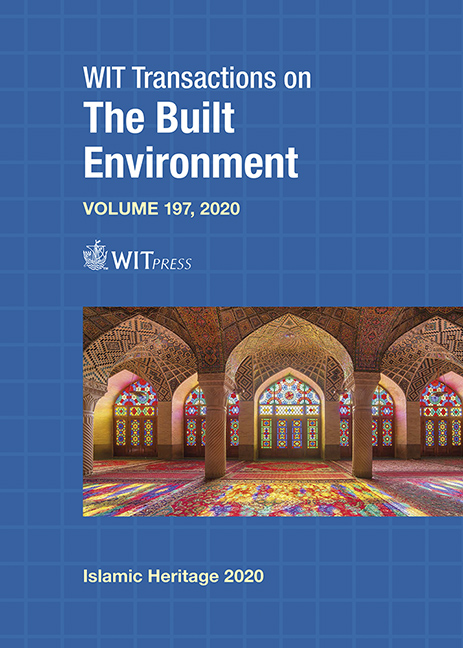RE-USING HERITAGE ELEMENTS IN NEW BUILDINGS: CASES FROM THE UNITED ARAB EMIRATES
Price
Free (open access)
Transaction
Volume
197
Pages
11
Page Range
27 - 37
Published
2020
Size
858 kb
Paper DOI
10.2495/IHA200031
Copyright
WIT Press
Author(s)
JIHAD AWAD, BOUZID BOUDIAF
Abstract
“Presence of the past” is one of the basic principles of postmodern architecture and has been interpreted in many ways. A multitude of architects turned towards the past and found their references in heritage elements. While some inspired ideas from historic architecture, others copied or re-used elements and vocabulary from heritage architecture. This trend started as a response to the principles of the modern movement and international style which dominated for decades. Post the discovery of oil in the United Arab Emirates (UAE) the need to express globalization and modernization, considered as indicators of prosperity and development, was expressed in the construction of high-rises and towers made of glass. This radical change in the architecture of the built environment was far removed from the architectural heritage of the country, resulting in the loss of the value of a sense of place. As the value of heritage and culture has gained traction globally, there is now a growing trend calling for architecture that reflects a localized, unique identity of place. Architects in response have started to borrow and copy elements from historical styles, at times regional and at times from different historical periods and cultures. This trend can also be observed all over the UAE and might be referred to as the “Nationalization” of architecture. It is common sight to now see characteristic features and elements of traditional Emirati architecture copied and duplicated in various new buildings by purely “re-using” forms irrespective of different functional uses. The purpose of this paper is to highlight the visible transformation in the use of traditional, functional elements of building heritage as visual, symbolic elements of culture and identity in new buildings. The paper also elaborates on how the most dominant symbol of Emirati heritage and identity, the Barjeel (pl. Barajeel) or wind catchers, can be conspicuously seen not only in architecture but also in various other contexts.
Keywords
heritage, postmodernism, Gulf architecture, wind catchers (Barajeel), modernization, globalization, vernacular architecture, United Arab Emirates, identity




